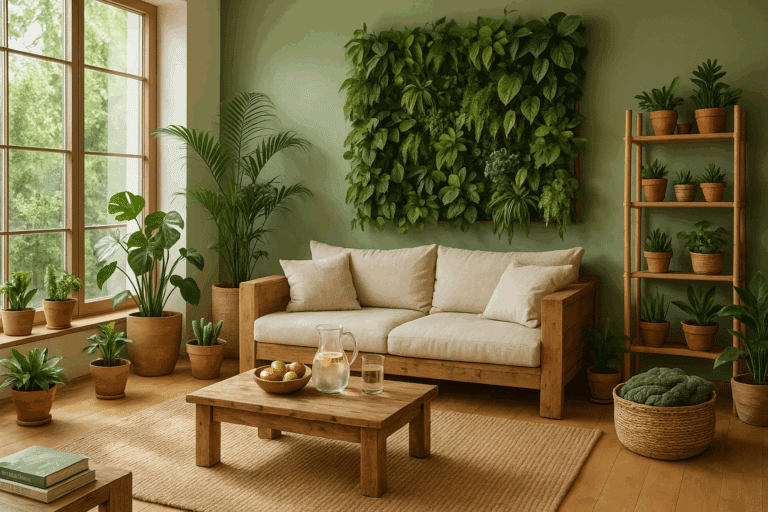This upcoming content will guide you through the exciting journey of revamping your garden with the help of reclaimed wood planter boxes. We will delve into the world of rustic charm and sustainable gardening, showcasing how these elements can enhance the overall appeal of your green space, making it not only a treat to the eyes but also to the soul. 🌳

We will explore how reclaimed wood planter boxes can infuse an earthy, natural feel to your garden, transforming it into a charming rustic haven. But that’s not all, they are also a wonderful testament to our commitment to sustainability and eco-friendly practices. By choosing reclaimed wood, you make a small yet significant contribution to reducing deforestation and waste. 🌍
The magic of rustic charm lies in its ability to blend the old with the new, the raw with the refined, creating an enchanting symphony that makes your garden stand out. Our upcoming sections will shed light on various design ideas, DIY projects, and expert tips to help you master the art of incorporating reclaimed wood planter boxes in your garden design. From selecting the right kind of wood to maintaining your planters, we’ve got you covered! 🏡
Stay with us as we unravel the secrets of giving your garden a sustainable and stylish makeover with reclaimed wood planter boxes. Whether you are a seasoned gardener looking for fresh inspirations, or a beginner venturing into the realm of rustic garden design, this guide will serve as a comprehensive resource for your journey. Get ready to add a new, sustainable and stylish touch to your garden! 🌿
Understanding the Value of Reclaimed Wood
In the ever-evolving conversation about sustainability and conscious living, the use of reclaimed wood stands out as a smart and stylish choice—especially for garden projects. Reclaimed wood refers to lumber that has been salvaged from previous constructions and repurposed for new uses. This wood may originate from demolished homes, aging barns, industrial buildings, railroads, or even shipping pallets. While its past life may be humble, its future in your garden can be rich in purpose and beauty.

The essence of reclaimed wood lies in its story. Each grain, knot, and weathered scratch reflects time, use, and resilience. Beyond its unique aesthetic, reclaimed wood symbolizes a respect for resources and a creative way to honor the past while building something new.
The Eco-Friendly Advantage
What truly distinguishes reclaimed wood is its environmentally friendly nature. Choosing reclaimed materials means fewer trees are cut, leading to less deforestation and habitat loss. Forests play a critical role in absorbing carbon dioxide and protecting biodiversity; by reusing wood, you reduce the pressure on these crucial ecosystems.
Additionally, using reclaimed wood minimizes the energy consumption and pollution associated with processing new timber. It requires fewer chemical treatments and less industrial processing, thus reducing your carbon footprint. This makes it a responsible choice for those seeking to lower the environmental impact of their home improvement and gardening projects.
The Durability and Aesthetic Appeal of Reclaimed Wood
Durability
Reclaimed wood is often denser and more stable than new wood. Many of the structures from which it is salvaged were built with old-growth lumber—wood from trees that had decades, if not centuries, to grow and harden. This naturally gives the material strength and resistance that is difficult to find in modern, fast-harvested lumber.
Furthermore, reclaimed wood has already been exposed to the elements. The process of expanding, contracting, and weathering has largely stabilized it, making it less likely to warp or crack. For outdoor applications like planter boxes, this makes reclaimed wood an exceptional material.
Aesthetic Appeal
The rustic charm of reclaimed wood is impossible to replicate. The deep tones, uneven textures, historic nail holes, and aged patina add authenticity and warmth to any garden space. Whether you’re going for a farmhouse vibe, vintage elegance, or rugged minimalism, reclaimed wood delivers natural beauty with character.
Each piece tells a story—it may once have held up a barn roof, lined a schoolhouse floor, or stood in the wall of a workshop. Bringing that history into your garden infuses your space with personality and a sense of legacy.
Designing Reclaimed Wood Planter Boxes
Creating your own reclaimed wood planter boxes is an empowering project. Not only do you gain a custom garden feature, but you also engage in a process that encourages creativity, craftsmanship, and environmental stewardship.
Step 1: Sourcing Your Materials
Begin by locating a source for reclaimed wood. You can find it through:
- Salvage yards or architectural reclamation centers
- Construction or demolition sites (with permission)
- Local classifieds or online marketplaces
- Old furniture or wood structures
- Pallets (check for heat-treated stamps instead of chemically treated)
Ensure that the wood you choose is free from rot, mold, pests, or hazardous coatings like lead-based paint.
Step 2: Choosing a Design
Planter boxes come in many shapes and sizes. You can build:
- Simple rectangular planters for herbs and small flowers
- Tall vertical boxes for privacy screening or decorative arrangements
- Tiered boxes for maximizing small spaces
- L-shaped or corner planters for wrapping around patios or decks
Sketch your design and measure the space where it will be placed. Consider how much soil volume you’ll need for the type of plants you intend to grow.
Assembling Your Planter Boxes
Tools and Materials Needed
- Saw (hand saw or circular saw)
- Hammer and nails or wood screws
- Measuring tape and pencil
- Drill (for drainage holes)
- Sandpaper or sander
- Wood glue (optional)
- Liners or landscaping fabric (optional)
Building the Box
- Measure and Cut: Cut your reclaimed wood into side panels, end panels, and a base.
- Assemble: Nail or screw the pieces together to form a rectangular box. Reinforce with corner braces if desired.
- Drainage: Drill several holes in the bottom to allow excess water to escape.
- Smooth Edges: Sand rough surfaces and edges to avoid splinters.
- Optional Liners: Line the inside with landscaping fabric or recycled plastic to further protect the wood and soil.
Pro Tips
- For large planters, consider adding feet or a pallet-style base to improve drainage and reduce direct contact with the ground.
- Staggered wood widths and aged textures can create a more organic, layered look.
Maintaining Your Reclaimed Wood Planter Boxes
Reclaimed wood is naturally robust, but maintenance will prolong its life and appearance.
Regular Cleaning
Over time, soil, leaves, and water buildup can lead to mold and decay. Clean the exterior of your planter box every few weeks with a brush and mild soapy water. Rinse and let dry thoroughly.
Wood Treatment and Finishing
Consider applying a non-toxic, outdoor-safe sealant, linseed oil, or beeswax-based finish to protect your planter from moisture. Avoid harsh chemical finishes that may leach into the soil.
Reapply finish once a year or after heavy exposure to rain or snow.
Winter Storage
If you live in a cold climate, bring smaller planters indoors during winter months, or cover them with tarps to reduce moisture exposure and prevent cracking from freeze-thaw cycles.
Benefits of Reclaimed Wood Planter Boxes
1. Sustainability
Using reclaimed wood promotes circular economy principles by giving materials a second life. You help reduce the need for fresh logging, save resources, and contribute to waste reduction.
2. Cost-Effectiveness
Reclaimed wood is often more affordable than buying new, especially when sourced for free or at low cost. It’s a budget-friendly way to create high-end-looking garden features.
3. Unmatched Style
Each planter box has a one-of-a-kind look. Unlike generic mass-produced alternatives, reclaimed wood offers natural variety in color, grain, and texture that enriches your garden’s visual appeal.
4. Long-Term Value
Planter boxes made from reclaimed wood are strong, weather-resistant, and, when cared for properly, can last for years. Their durability translates to fewer replacements and less maintenance in the long run.
Creative Enhancements and Custom Touches
- Paint or stencil designs on the exterior for a whimsical or modern effect
- Attach trellises or vertical panels for climbing plants like peas or morning glories
- Use rope handles or old metal hardware for rustic charm
- Incorporate chalkboard panels for labeling herbs and vegetables
You can even mix reclaimed wood with other recycled elements like wrought iron, salvaged bricks, or vintage signage to elevate the design even further.
Conclusion: Crafting with Purpose and Personality
Reclaimed wood planter boxes are more than garden accessories—they are statements of intention. They show that beauty can arise from what once was discarded, and that your garden can reflect your values as much as your tastes.
Through thoughtful design and hands-on construction, these planters combine sustainability, durability, and aesthetic richness into a functional centerpiece for any outdoor space. Whether you’re cultivating fresh herbs, blooming flowers, or simply a greener lifestyle, reclaimed wood planter boxes are a rewarding and environmentally conscious choice.
Long-term Value
Due to their durability and quality, reclaimed wood planter boxes offer excellent long-term value. With proper care, these planters can last for years, making them a worthwhile investment for your garden.
- Sourcing Reclaimed Wood: There are several avenues for sourcing reclaimed wood, ranging from specialized retailers to salvage yards and online platforms.
- Design and Assembly: Once sourced, the wood needs to be cut into appropriate lengths and assembled into the desired planter box design.
- Maintenance: Regular cleaning and occasional treatment with a suitable wood finish will keep your planter boxes in top condition.
- Benefits: Reclaimed wood planter boxes offer numerous benefits, including environmental sustainability, rustic charm, and long-term value.
With reclaimed wood planter boxes, you’re not just creating containers for plants—you’re cultivating a story within your garden. Every knot, grain, and weathered groove tells of its past life, now reborn with purpose and intention. This narrative-rich element not only adds character to your garden but also becomes a focal point for meaningful conversations around sustainability and creativity.
Beyond visual appeal, these boxes provide functional resilience. They withstand seasonal changes, resist warping and rotting when properly maintained, and serve as sturdy structures for a wide variety of plants. From cascading vines and flowering blooms to vegetables and aromatic herbs, reclaimed wood planters are as adaptable as they are beautiful. Their natural insulation properties even help regulate soil temperature, supporting healthier root systems throughout the year.
Moreover, using reclaimed wood fosters a hands-on connection to your garden. Building your own planter box encourages craftsmanship and personalization—you can tailor the size, shape, and style to suit your specific outdoor space or design vision. Add wheels for mobility, build tiered boxes for compact areas, or integrate vertical slats for climbing plants.
These planters aren’t just accessories; they’re investments in longevity, character, and ecological consciousness. By choosing reclaimed wood, you demonstrate that sustainability and beauty can coexist seamlessly—and that gardening, at its best, is a reflection of care for both plants and the planet.
Conclusion
In conclusion, incorporating rustic charm into your garden by using reclaimed wood planter boxes is an exceptional way to add both sustainable and stylish touches. Not only are these boxes environmentally friendly, reducing waste and supporting the recycling movement, they also possess a unique aesthetic that seamlessly blends with nature, providing a visually appealing look to your outdoor space.
The patina of the weathered wood, the history etched into each plank, and the visible wear and tear, all contribute to a sense of authenticity that cannot be replicated by new materials. From small herbs to bigger plants, these boxes can accommodate a variety of flora, breathing new life into your garden. Plus, they are a testament to your commitment to sustainable living.
Regardless of your garden’s size or style, reclaimed wood planter boxes are a versatile addition that can transform your space. Whether you’re an experienced gardener looking to revamp your garden or a beginner seeking a simple yet effective way to start, these boxes can add a touch of rustic charm, creating an inspiring and eco-friendly garden space. Reclaimed, reused, and remarkably charming – that’s the essence of these sustainable and stylish planter boxes.
With reclaimed wood planter boxes, you’re not just creating a garden; you’re telling a story – a story of sustainability, style, and rustic charm.



